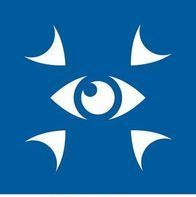Healthyeye Vision

Healthyeye Vision
EVERYTHING YOU NEED TO KNOW ABOUT KERATOCONUS SCREENING AND MORE
At Healthyeye Vision, we offer advanced services for keratoconus screening and other eye conditions.
Our team is at your disposal to answer any questions and guide you through personalised treatments, such as crosslinking (CXL), to preserve and enhance your vision. You will find detailed information in our FAQ section about what keratoconus is, its symptoms, treatment options and much more. Feel free to contact us for further clarification: we are here to provide you with professional consultations and tailored assistance for your visual needs.
Diopsys Electrophysiology Platform
The Diopsys ERG module is a non-invasive test that records the electrical function of the retina, particularly the macula and ganglion cells.
Two different ERG test protocols are available: one with concentric stimuli and another with contrast sensitivity.
This test is simple, quick, harmless and repeatable. Electrodes are attached to the skin using a patch, and the patient focuses on a monitor where the visual stimulus is presented. After a few minutes, an ERG test report will be provided.
The Diopsys ERG is useful in diagnosing and monitoring retinal diseases such as age-related macular degeneration (AMD), diabetic macular oedema or diabetic retinopathy and toxic maculopathies (e.g., maculopathy related to Plaquenil use).
It allows the evaluation of the function of the ganglion cells in the retina, providing early diagnosis of glaucoma. It also helps the doctor assess the result of a therapeutic decision, such as the introduction of a medication (eye drops) to lower intraocular pressure, or after laser treatment (SLT) or surgery. Along with other tests, such as computerised visual fields or anatomical examination of the optic nerve and nerve fibres, the Diopsys ERG helps in evaluating each eye.
Frequently Asked Questions about Ophthalmological Treatments
What is keratoconus according to an ophthalmologist?
Keratoconus is a progressive corneal disease characterised by thinning and deformation of the cornea into a cone shape. This structural change leads to distorted and blurred vision, as the cornea is no longer able to properly refract light onto the eye. Symptoms may include blurred vision, increased sensitivity to light, and difficulty seeing at night. The condition can develop slowly and worsen over time, but early diagnosis and appropriate treatment can slow its progression. Keratoconus screening is essential for detecting the disease and managing it effectively.
What is crosslinking (CXL) according to an ophthalmologist?
Corneal crosslinking (CXL) is an innovative treatment to slow down or stop the progression of keratoconus. The procedure involves the application of riboflavin (vitamin B2) onto the cornea, followed by controlled exposure to ultraviolet (UV) rays. This process strengthens the bonds between collagen fibres within the cornea, increasing its rigidity and stabilising its structure. CXL does not directly improve vision, but it is effective in preventing further corneal deformation, helping to maintain existing vision. It is often used in combination with other therapies to achieve optimal results.
CONTACT INFORMATION
Lugano Telephone: +41 91 967 11 55
Zurich Telephone: +41 43 336 38 00
Lugano Office:
Via Besso 31, 6900 Lugano
Zurich Office:
Badenerstrasse 530, 8048 Zurich
Lugano Office
- Monday
- - -
- Tuesday
- -
- Wed - Fri
- Closed
- Saturday
- -
- Sunday
- Closed
Zurich office
- Mon, Wed
- -
- Tuesday
- - -
- Thursday
- - -
- Fri - Sun
- Closed
Biasca office
- Mon, Wed, Thu
- Closed
- Tue, Fri
- -
- Sat - Sun
- Closed
Healthyeye Vision

